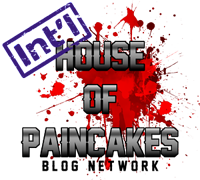This is a way for any groups use of skills in their games to 'fit' a little better with the Siege Engine System - so its possible to actually use both approaches - allowing characters to attempt pretty much anything whilst maintaining a more structured approach - with appropriate Challenge Ratings of course.
This would still allow (for example) a Fighter to attempt to pick a lock - he just wouldn't have much of a chance of succeeding.
I personally believe that rather than have a long static list of skills, the players should choose skills that fit their character concept and with the help of their Myth Master - come up with their own list of skills and their descriptions.
Skills would still have levels of sorts – and these levels are ‘rated’ like any characters attributes - Tertiary (the lowest skill level), Secondary (average skill level), and Primary (the highest skill level).
Like class skills, the character applies any appropriate attribute bonus to the task at hand - strength when shoeing a horse, or dexterity when making a horse-shoe – both would be considered to come under the skill heading of blacksmithing, but you would require strength for one and manual dexterity for the other. But unlike class skills, you don't add your class level in a 'straight' manner.
Primary skills get a +1 bonus per level, Secondary gets +1/2 levels, and Tertiary gets a +1 bonus per 3 levels.
Your base challenge rating is determined by skill 'level' – level 3/Primary = 12, level 2/Secondary = 15, and level 1/Tertiary = 18. This in turn has a Challenge Rating applied by the Myth Master determined by the individual circumstances for that particular use of the skill.
As rule of thumb - the Number of slots a Character has for his Secondary Skills are equal to the Characters (INT+WIS), + Characters Starting Age/10 (another advantage for most Non-Humans).
What levels your skills start at is dependent upon how many skill points you have, and how you spend them. The cost increases AFTER first level, this represents the fact that a Characters focus becomes his Class(es) so new secondary skills become more difficult to learn.
| Skill Level | Cost at First Level | Skill Level | Cost after First Level |
| Tertiary/18 | 1 point | Tertiary/18 | 3 point |
| Secondary/15 | 2 points | Secondary/15 | 5 points |
| Primary/12 | 3 points | Primary/12 | 8 points |
For example, Brother Kydric has 26 ‘Slots’ to spend on his Secondary Skills – and he decides to spend 6 Slots on Healing. Giving him the Healing secondary skill at Level 3/Primary, his base challenge difficulty for all tests involving his Healing secondary skill is set at 12.
A Character gains Secondary Skill points at every ‘Odd’ level (3rd, 5th, 7th and so on), the points he gains are equal to his Int or Wis attribute modifier (whichever is higher) +1 (with a minimum of 1).
To make the check, the character performing the skill simply rolls a d20 and adds his appropriate modifiers - the difficulty is set by his skill level (either 12, 15, or 18) plus any challenge rating added by his Myth Master.
So if a character is level three, has a dexterity of 15 (the appropriate attribute in this example), and his skill level is 3/Primary – when using the Weapon Smith secondary skill they are allowed a +4 to their roll.
In some instances the use of skills causes another to make a saving throw. In this case, the character, monster or non-player character makes a saving throw but modifies the roll by a -1 for each level of skill the character has (-1 for Tertiary, -2 for Secondary, and -3 for Primary).
This is also adjusted further for any attribute modifiers. When a saving throw is called for, the character’s level or monsters hit dice also affect the roll.
Furthermore, as mentioned above - there are always circumstances than need some modification beyond that mentioned above.
Unusual circumstances, the weather and pure chance can come into play to effect the chances of success. In addition, the difficulty of the situation also adjusts the roll.
The following is offered as a guideline for deciding these modifications.
| Rudimentary | -8 | | Simple | -6 |
| Routine | -4 | | Familiar | -2 |
| Average | 0 | | Unusual Application | +1 |
| Complex | +3 | | Demanding | +5 |
| Difficult | +7 | | Extremely Difficult | +9 |
| Nearly impossible | +11 | | Never Gonna Happen | +13 |
For those who REALLY desire (or need) a skill list, might I refer to such a list as this one - http://www.dandwiki.com/wiki/SRD:Skills - But I would recommend NOT allowing non-roguish Characters to take Skills normally only accredited to Thieves and Assassins.
Or, alternatively - you could just allow players to roll on the secondary skill chart from AD&D 1st Edition a few times if you want really broad skills.



No comments:
Post a Comment